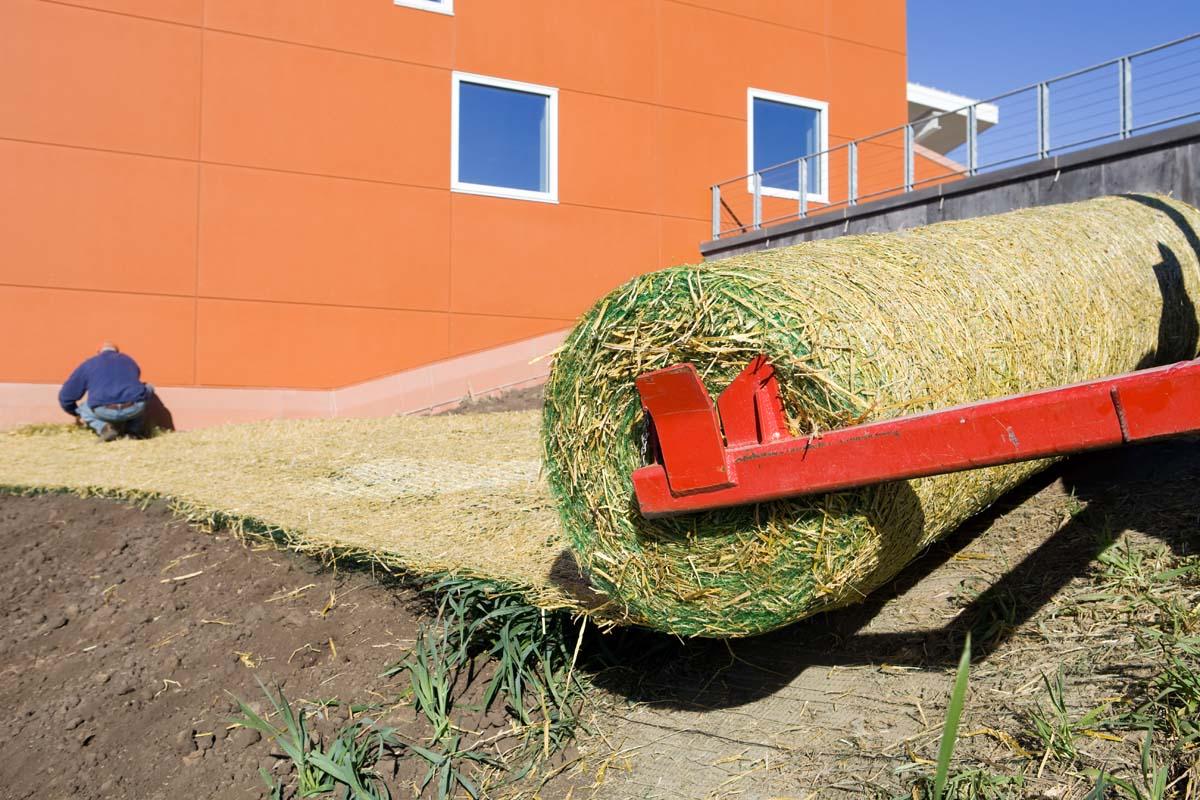Hydroseeding Solutions: A Greener Approach to Land Management
Wiki Article
Ideal Practices for Disintegration Control in Construction Projects
Are you dealing with a building job and concerned about disintegration control? Look no more! In this article, we will direct you with the ideal practices for stopping disintegration on your site. You'll find five important strategies, effective sediment and overflow administration methods, key considerations for slope stablizing, and suggestions for safeguarding plant life and dirt. We'll additionally dive right into the relevance of implementing correct water drainage systems. Get prepared to deal with disintegration head-on and make certain the success of your building project.5 Essential Erosion Control Methods

To efficiently manage erosion on your construction site, you'll need to implement important techniques such as slope stabilization and sediment control steps. Slope stabilization is crucial in preventing soil disintegration on high slopes. One more effective technique is the usage of disintegration control blankets or mats, which are placed on the incline and assistance maintain soil particles while allowing greenery to expand.
Reliable Debris and Overflow Management

You can successfully take care of sediment and overflow in your building task by implementing appropriate disintegration control measures. Sediment and overflow management is critical to stop disintegration and protect the surrounding atmosphere. One reliable measure is the installation of silt fencings along the perimeter of the building website. These fencings aid to consist of sediment and prevent it from entering nearby water bodies. One more vital technique is the execution of disintegration control coverings or mats. These blankets offer a protective layer on bare soil, reducing the impact of rains and protecting against disintegration. Furthermore, using sediment containers or debris catches can assist to capture sediment and stop it from getting in stormwater systems. Routine maintenance of these measures is vital to ensure their effectiveness throughout the construction project. This includes cleaning up and checking sediment basins and frequently replacing silt fences and erosion control coverings as needed. By implementing these erosion control procedures, you can properly handle debris and overflow in your construction task, reducing the effect on the atmosphere and adhering to governing demands.
Key Considerations for Incline Stablizing
When thinking about incline stablizing, it is essential to evaluate the terrain and determine possible areas of instability. You need to very carefully check out the slope's qualities, such as its drain, structure, and angle patterns. Try to find indicators of disintegration, such as revealed origins, splits, or down dirt. These indications can offer you an idea of where stabilization measures may be required.Once you have identified the unstable locations, you can start implementing measures to support the slope. One usual method is making use of retaining walls or terracing to develop a collection of flat steps, which can help disperse the weight and stop additional erosion. Another choice is to grow vegetation on the incline, as the origins can help secure the dirt and control erosion. Additionally, mounting disintegration control blankets or floor coverings can supply instant protection while plant life ends up being recognized.
It's critical to routinely keep track of the maintained slopes to guarantee their effectiveness. Maintain an eye out for any indications of activity or erosion, and take instant action if needed. Regular maintenance, such as evaluating and repairing any type of broken steps, is additionally vital to ensure long-lasting security.
Best Practices for Greenery and Dirt Protection
One efficient way to shield greenery and soil on inclines is by routinely inspecting for signs of erosion and taking prompt action if essential. Begin by evaluating the slope for any kind of signs of disintegration, such as exposed origins, bare soil patches, or debris build-up at the bottom. Implement erosion control actions such as setting up disintegration control blankets, mulching, or also constructing preserving walls if required.Applying Appropriate Water Drainage Solutions
When it comes to managing water circulation and preventing erosion, recognizing these aspects is important. Steeper inclines can lead to much faster water circulation, raising the danger of erosion and flooding. On the other hand, gentler slopes permit water his comment is here to move a lot more slowly, decreasing erosion potential.Sandy dirts tend to drain pipes faster due to their coarse structure, while clay soils have a slower water drainage next rate due to their portable nature. Furthermore, considering the dirt attributes assists stop waterlogging, which can lead to poor plant development and damages to frameworks.
Final Thought
To conclude, when it concerns disintegration control in building tasks, you should adhere to these best methods. Apply effective debris and drainage management methods to stop pollution. Think about incline stablizing methods to make sure the security of the website. Protect plants and dirt by utilizing proper actions. Establish proper drain systems to take care of water circulation (silt fences). By following these necessary methods, you can properly regulate erosion and guarantee the success of your building job.To efficiently manage erosion on your construction site, you'll need to implement essential strategies such as incline stablizing and sediment control steps. Incline stablizing is critical in protecting against dirt disintegration on high inclines. One more efficient method is the usage of erosion control blankets or floor coverings, which are put on the slope and aid maintain soil particles while permitting greenery to grow. An additional choice is to plant plants on the slope, as the roots can assist anchor the dirt and control erosion. Implement disintegration control procedures such as setting up erosion control official statement coverings, mulching, or even creating preserving wall surfaces if needed.
Report this wiki page